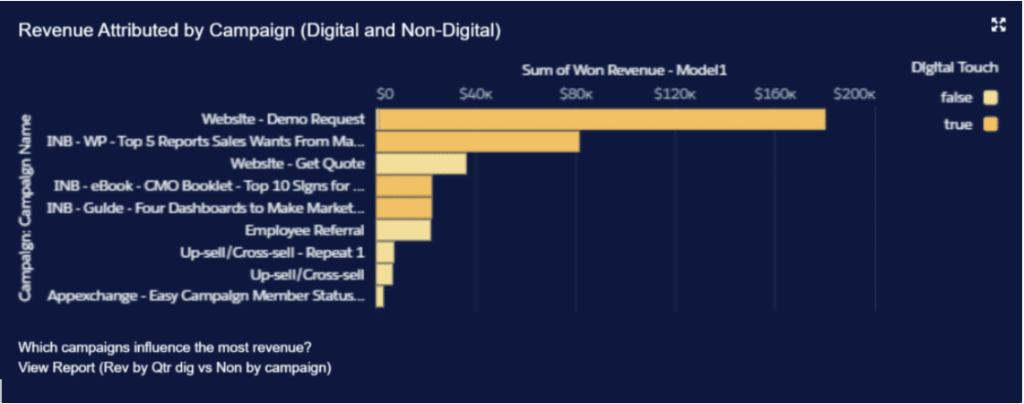This article was originally published in Martech Zone.
As marketers adjust campaigns to respond to the economic fallout from COVID-19, it’s more important than ever to know how to pick winners. Revenue-focused metrics let you allocate spend effectively.
It’s jarring but true: the marketing strategies companies started implementing in Q1 2020 were obsolete by the time Q2 rolled around, blown up by the COVID-19 crisis and the cascading economic fallout from the pandemic. Business consequences include tens of millions affected by cancelled events. Even as some states experiment with reopening, no one really knows when business activities like roadshows and industry conferences will resume.
Marketers have had to rethink their marketing outreach plans in light of these changes. Many marketing departments have postponed campaigns and cut budgets. But even marketing teams that are moving ahead at full steam are adjusting their strategies to reflect new marketplace realities and improve ROI. On the B2B side especially, increasing competition will make it imperative to ensure that each dollar from the marking budget generates revenue — and that marketers can prove it.
Some B2B marketers have restructured their marketing outreach approach by shifting spend previously allocated to events, now to digital channels. That can be effective, especially if they’ve adjusted their Ideal Customer Profile to account for new economic conditions. Taking care of other basics like analyzing funnel metrics to accurately attribute revenue to campaigns also makes sense, as does testing various combinations of messages, content types and channels to determine what works best.
Once the basics are addressed, there are several ways you can examine data at a more granular level to find out if your B2B digital marketing programs are working efficiently and determine which are driving the best results in terms of revenue. The metrics digital marketing point solutions provide will tell you which campaigns are generating clicks and page views, which is useful. But to do a deeper dive, you’ll need data that provides insight on campaign influence on revenue and sales.
Looking at historical demand generation campaign data is a good place to start. You can analyze the split between digital and non-digital outreach and determine how each piece drove sales. That will require a campaign attribution model. A “first touch” model that credits leads to the initial encounter the company had with a prospective customer will typically show that digital campaigns play a major role in generating new customer interest.
It can also be illuminating to find out which campaigns influenced the most sales. The chart below illustrates how digital and non-digital campaigns influenced sales in one example:

Drilling down into historical data like this can provide significant insights as you retool your marketing strategy to emphasize digital campaigns. It can help you pick winners when you’re considering several different options.
Velocity metrics are another important component in choosing winning campaigns. Velocity describes the time (in days) it takes to convert a lead to a sale. The best approach is to measure velocity at each stage of the marketing and sales funnel. When you need to get to revenue quickly, you’ll want to make sure you can spot and eliminate any bottlenecks in the process. Measuring velocity at each funnel stage also provides insight on how effective adjustments you’ve made are.
The chart below shows an example of the velocity of marketing qualified leads (MQLs) as they moved through the funnel in 2019 and the first quarter of 2020:

As the data in this example shows, the marketing team significantly improved their Q1 2020 results when compared to Q1 2019. That insight gives the team valuable information about the potential velocity of the programs that were implemented during those two timeframes. Marketers can use that insight to speed time to revenue going forward.
No one knows exactly what the future will bring as businesses reopen on a regional basis and economic activity picks up. B2B marketers have already had to adjust their campaign strategy, and they’ll probably have to tweak it again as new factors emerge. But during uncertain times, the ability to pick likely winners is more important than ever. With the right data and analytics capabilities, you can do just that.
Evaluate Digital Marketing Program Success
Performance-driven marketers need to measure digital marketing effectiveness
in order to evaluate how and where to best spend marketing dollars.
See how the Full Circle Digital Source Tracker allows you to do this.



